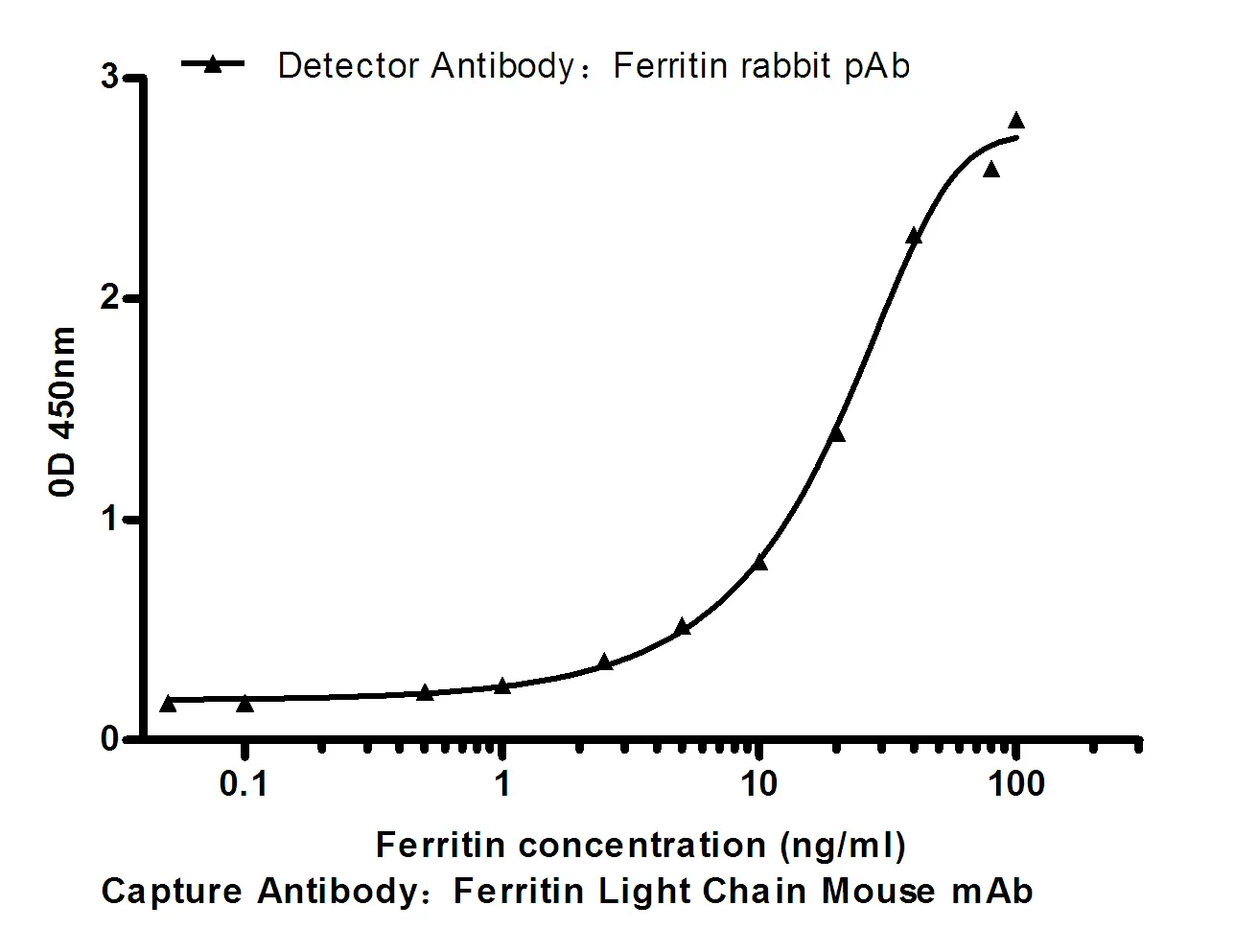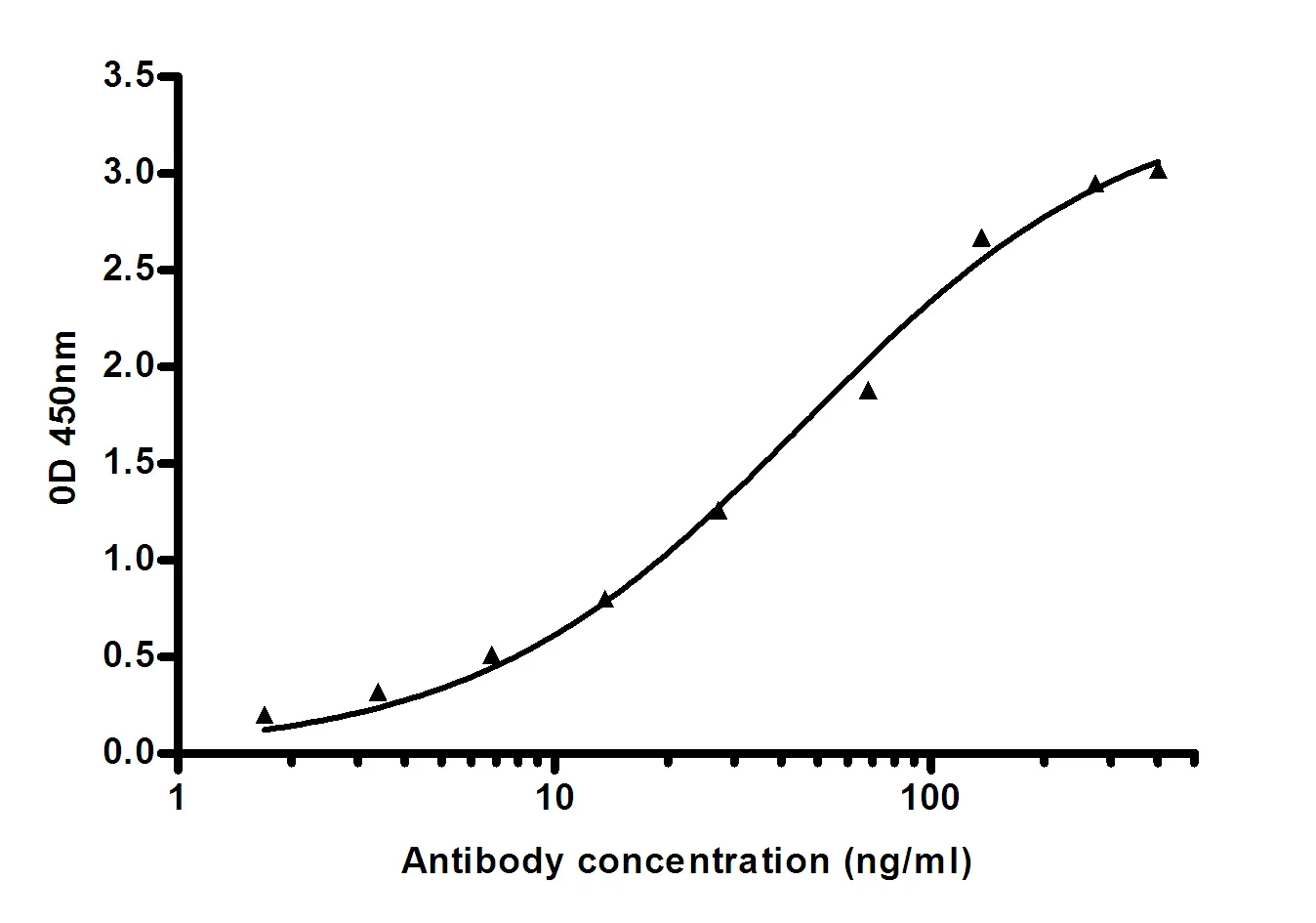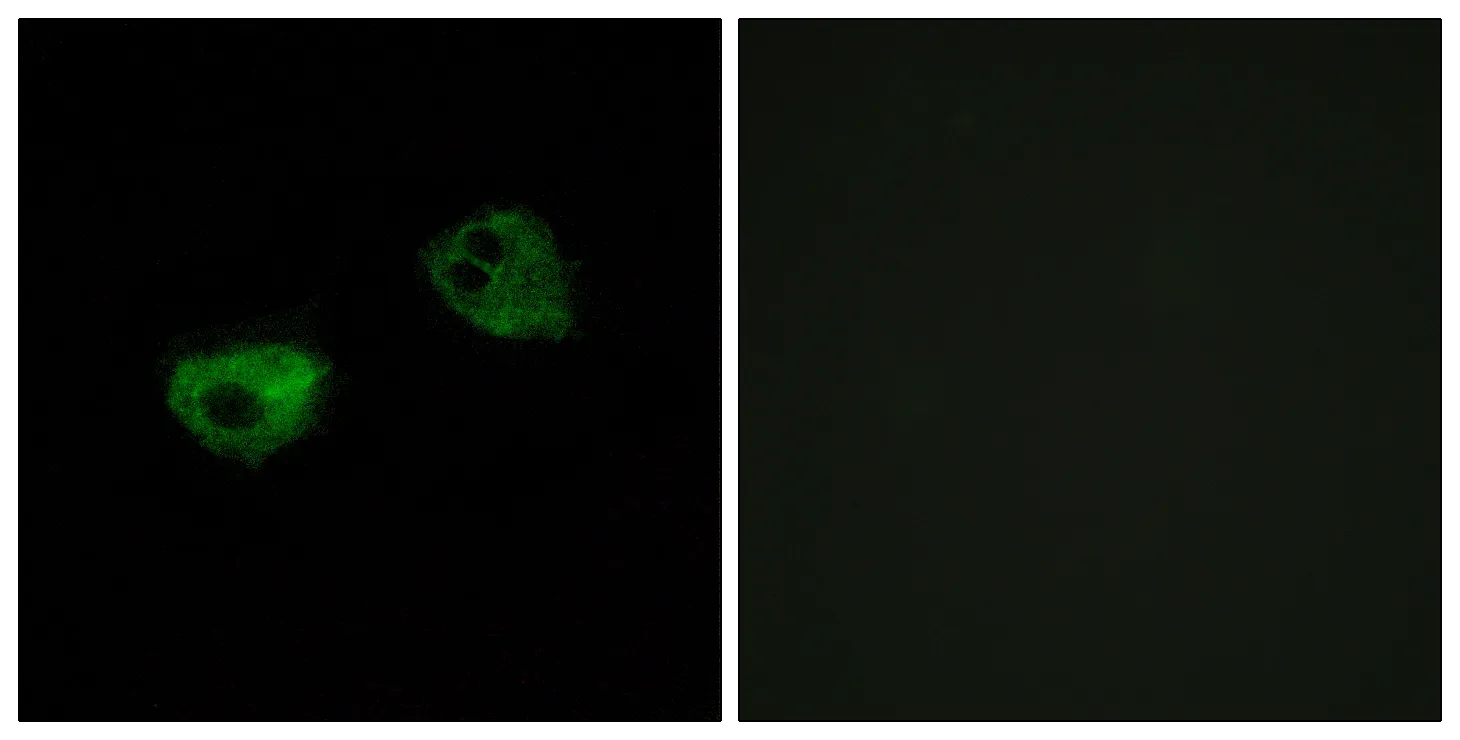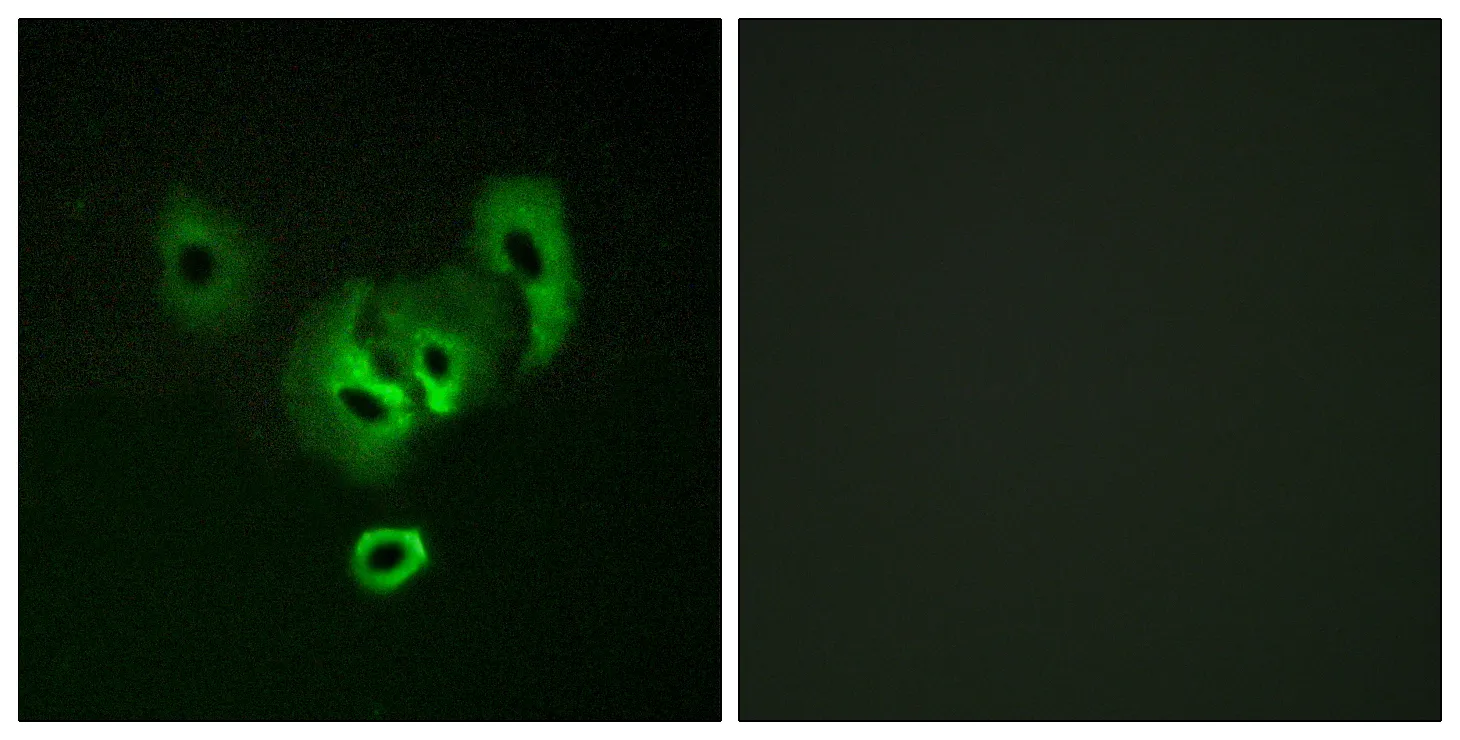Summary
Performance
Immunogen
Application
Background
C3a is an anaphylatoxin released during activation of the complement system. The protein encoded by this gene is an orphan G protein-coupled receptor for C3a. Binding of C3a by the encoded receptor activates chemotaxis, granule enzyme release, superoxide anion production, and bacterial opsonization. [provided by RefSeq, May 2016],function:Receptor for the chemotactic and inflammatory peptide anaphylatoxin C3a. This receptor stimulates chemotaxis, granule enzyme release and superoxide anion production.,PTM:Among the sulfation sites Tyr-174 is essential for binding of C3a anaphylatoxin.,similarity:Belongs to the G-protein coupled receptor 1 family.,tissue specificity:Widely expressed in several differentiated hematopoietic cell lines, in the lung, spleen, ovary, placenta, small intestine, throughout the brain, heart, and endothelial cells. Mostly expressed in lymphoid tissues.,






